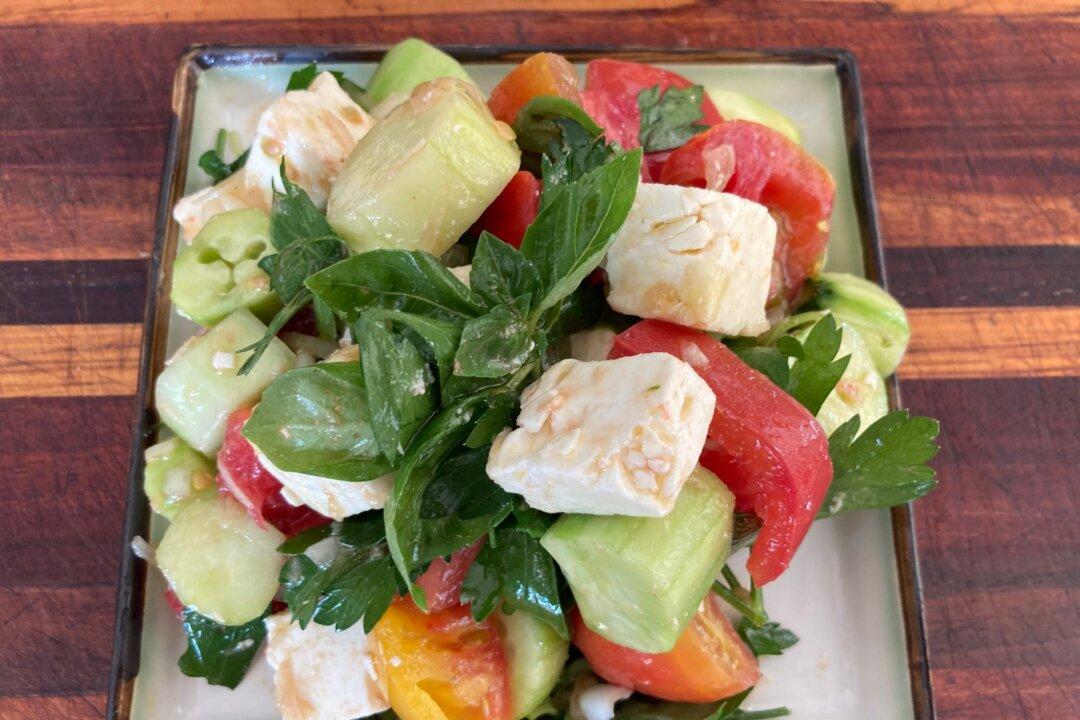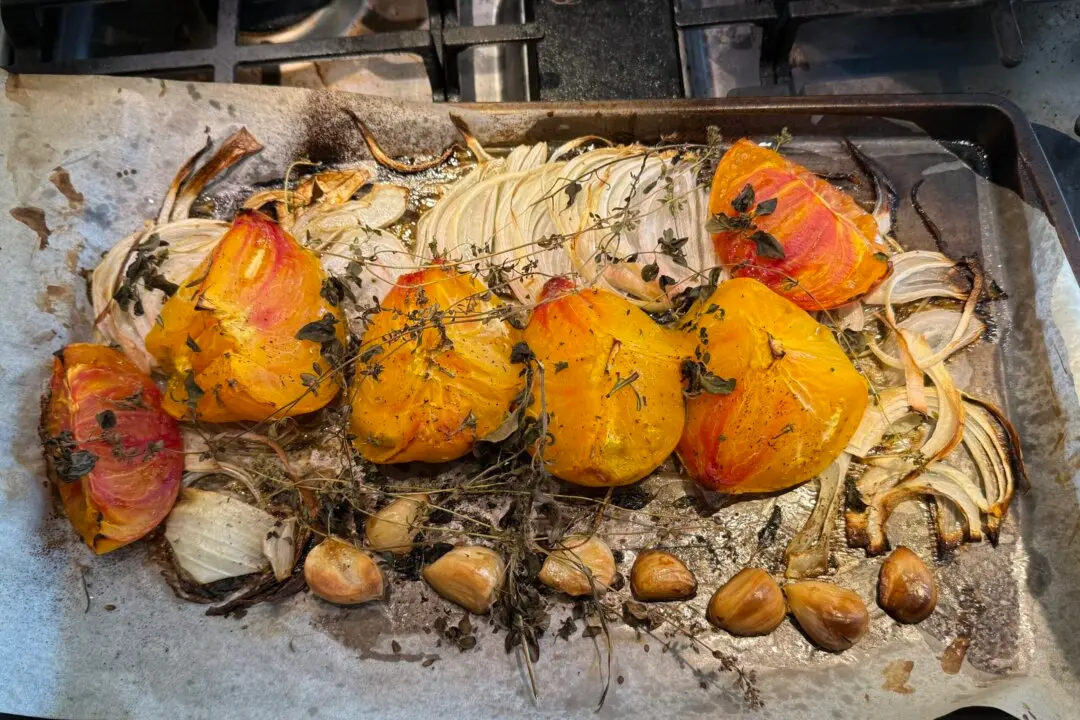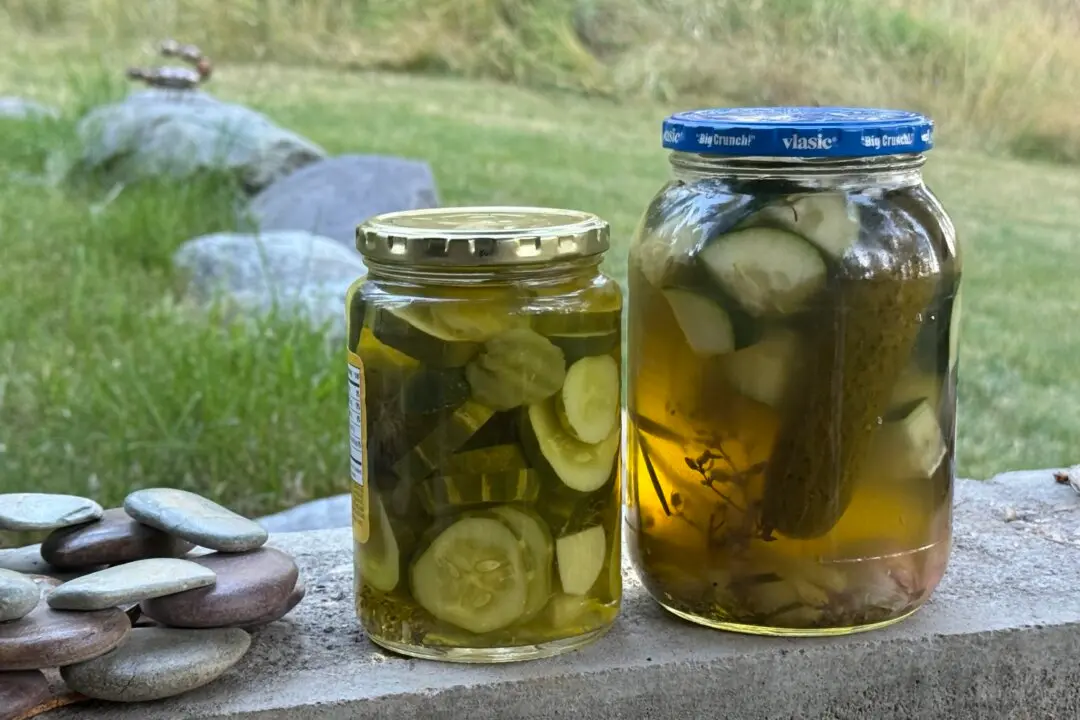This time of year, it can be a challenge to name a single item of produce that isn’t ripe. The earth has tilted squarely toward peak veg, the gazpacho days of summer when anyone can be a vegetarian with barely an effort. Even the most dedicated carnivore might find themselves satisfied, at the end of a meat-free meal, and not even realize it.
I get that way for a salad I call Greco-Roman Caprese. I realize that by going public with such a name, I might never be able to travel freely on the Island of Capri, where the iconic salad of tomato, basil, and mozzarella is supposed to have originated. But I mean it with the utmost respect.





